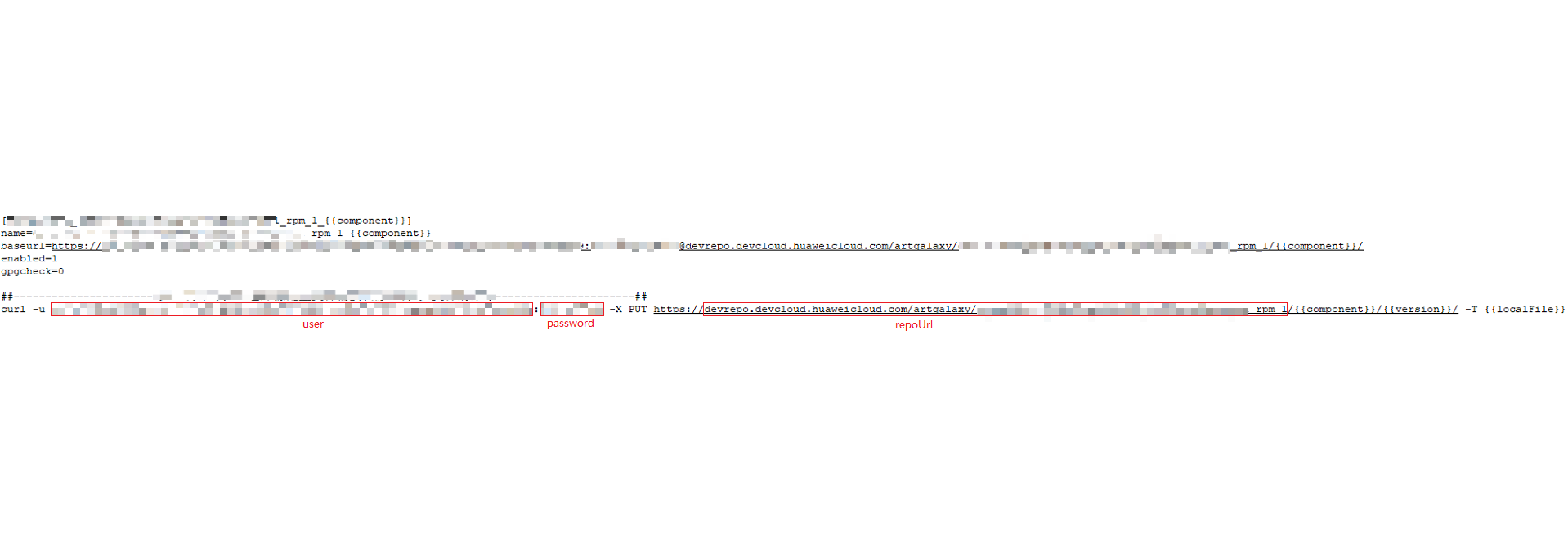Uploading/Obtaining an RPM Package Using Linux Commands
This practice describes how to use Linux commands to upload a private package to an RPM repository and obtain a dependency from the repository.
Prerequisites
- You have an RPM package available.
- You have a Linux host that can connect to the public network available.
- You have created an RPM repository in the self-hosted repo.
- You have permissions for the current repository. For details, see Managing Repository Permissions.
Releasing a Package to an RPM Repository
- Use your Huawei Cloud account to access self-hosted repos.
- Select an RPM repository. Click Tutorial on the right of the page.

- In the displayed dialog box, click Download Configuration File.
- On the Linux host, run the following command to upload an RPM package:
curl -u {{user}}:{{password}} -X PUT https://{{repoUrl}}/{{component}}/{{version}}/ -T {{localFile}}In this command, user, password, and repoUrl can be obtained from the RPM upload command in the configuration file downloaded in the previous step.
- user: character string before the colon (:) between curl -u and -X
- password: character string after the colon (:) between curl -u and -X
- repoUrl: character string between https:// and /{{component}}

component, version, and localFile can be obtained from the RPM package to be uploaded. The hello-0.17.2-54.x86_64.rpm package is used as an example.
- component: software name, for example, hello.
- version: software version, for example, 0.17.2.
- localFile: RPM component, for example, hello-0.17.2-54.x86_64.rpm.
The following figure shows the complete commands.

- After the commands are successfully executed, go to the self-hosted repo page and find the uploaded RPM package.
Obtaining a Dependency from an RPM Repository
The following procedure uses the RPM package released in Releasing a Package to an RPM Repository as an example to describe how to obtain a dependency from an RPM repository.
- Download the configuration file of the RPM repository by referring to Releasing a Package to an RPM Repository.
- Open the configuration file, replace all {{component}} in the file with the value of {{component}} (hello in this file) used for uploading the RPM file, delete the RPM upload command, and save the file.
- Save the modified configuration file to the /etc/yum.repos.d/ directory on the Linux host.

- Run the following command to download the RPM package: Replace hello with the actual value of component.
yum install hello
Feedback
Was this page helpful?
Provide feedbackThank you very much for your feedback. We will continue working to improve the documentation.See the reply and handling status in My Cloud VOC.
For any further questions, feel free to contact us through the chatbot.
Chatbot





